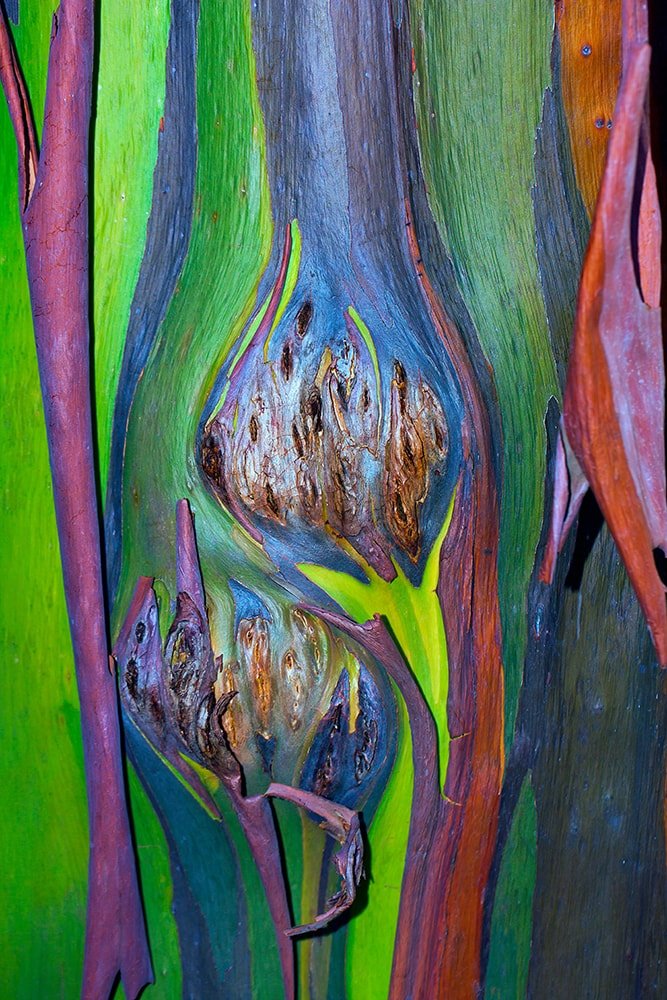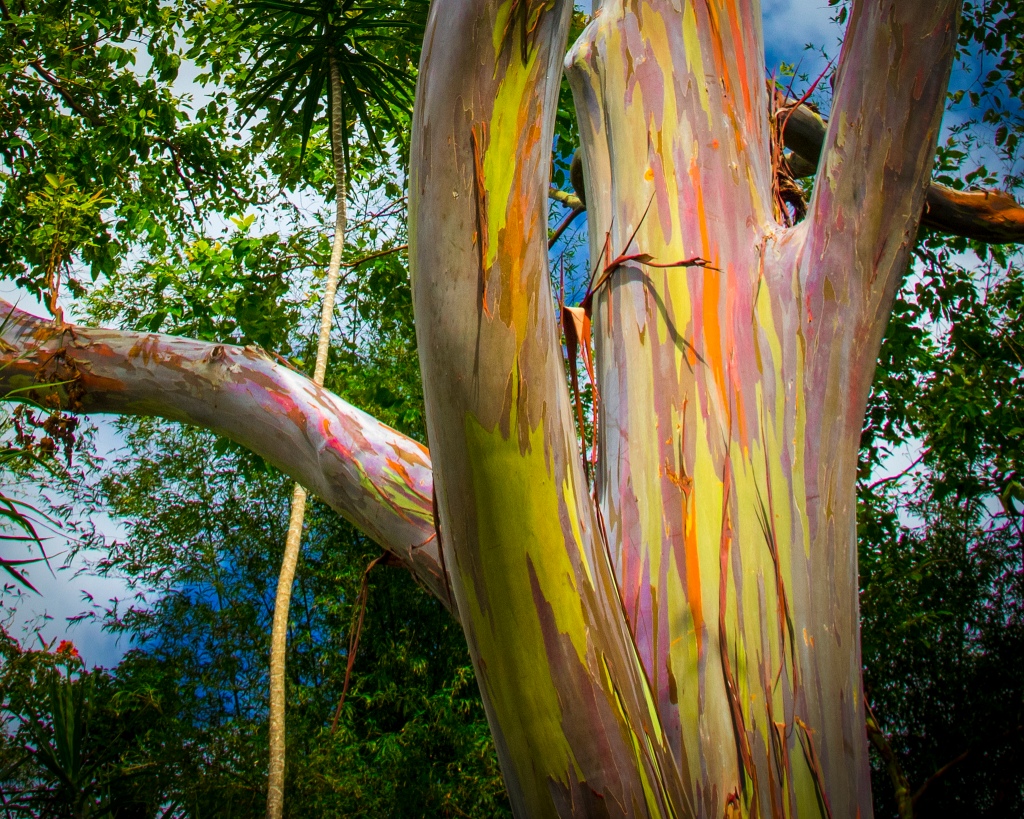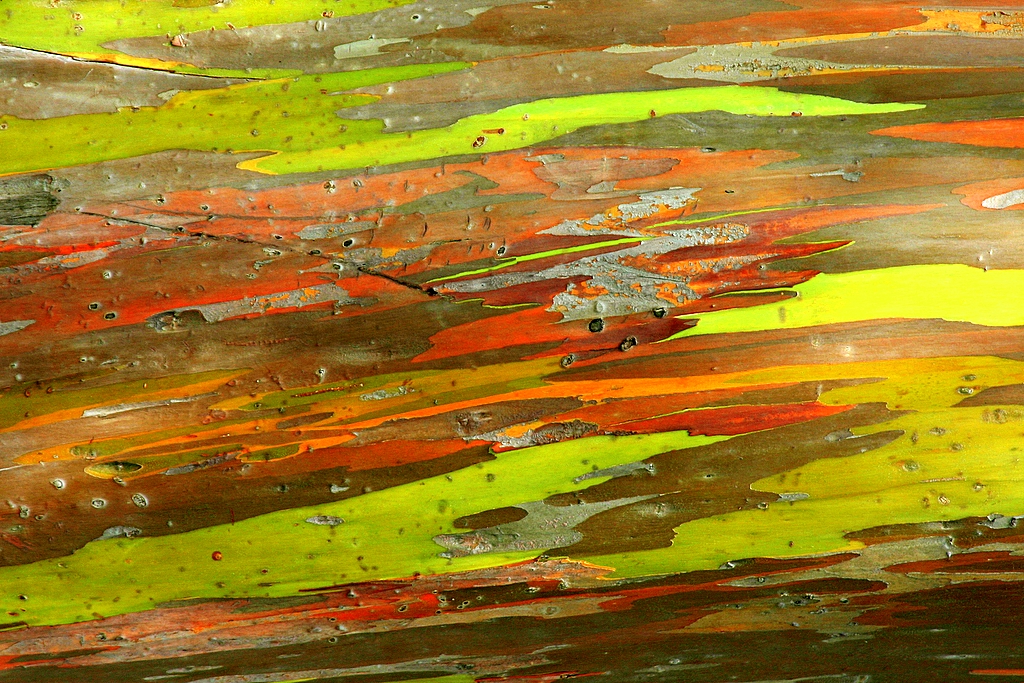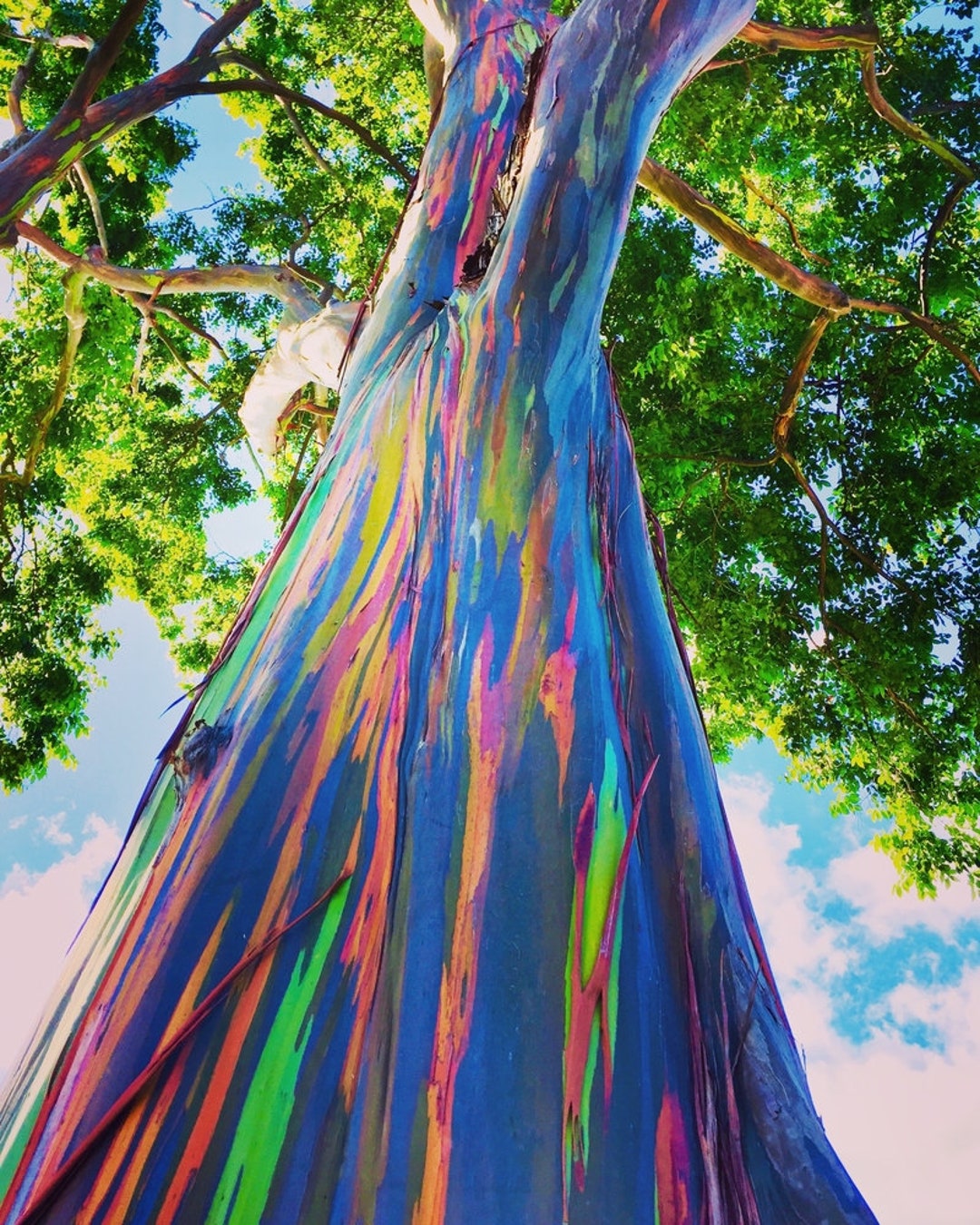The Philippines’ Most Bizarre Tree – The Rainbow Eucalyptus

When it comes to trees and their color, the discussion is usually focused on the beautiful yellows and browns of Fall leaves. But in the case of the eucalyptus deglupta, or rainbow eucalyptus, it’s the trunk that changes color.
After the tree sheds its bark, it bursts into a technicolor display of oranges, blues, and greens.

The rainbow eucalyptus hails from Mindanao, an island in the southern part of the Philippines. It was initially called the Mindanao gum, and is known locally as bagras. Like many other eucalyptus trees, it grows quickly to heights exceeding 60 meters (200 feet).

Rainbow Eucalyptus trees on the road to Hana in Hawaii – photo credit Jim Mullhaupt
The tall evergreen trees are the only members of the eucalyptus genus that grow in the Northern Hemisphere. In their native Philippines, they are used extensively to make paper and paper products, but they have also been introduced in Hawaii and other places as a decorative tree.

Traditionally, they have many uses in folk medicine. The leaves are antiseptic, and were used for wounds and in teas to treat asthma and coughs. The leaves and tree are also said to have the particularly useful characteristic of repelling mosquitoes.

The Mindanao Gum or rainbow eucalyptus is native to the Philippines – photo credit Thomas
What causes the colorful rainbow eucalyptus?
According to research by David Lee, professor at Florida International University and author of the book Nature’s Palette: The Science of Plant Color, the change takes place on the microscopic level. When the bark is stripped away, bright green chlorophyll is readily visible through a thin transparent surface layer that’s just one cell thick.
As time passes, reddish brown tannins build up in the surface layer, changing the apparent color. The chlorophyll beneath also dies down with time, creating the incredible fluorescent display that the tree is known for. The tree prefers wet, humid climates, and although the color can be observed anywhere, the display is brightest in the trees that grow in their native Mindanao.

The colorful bark of the rainbow eucalyptus – photo credit carvalho
Lee thinks that the process is a way to prevent other organisms from growing on the tree’s trunk. This defense system helps the tree grow strong quickly, and the colors are a fortunate side effect for those of us with sight.

There are notable trees all over the Pacific islands, as well as Hawaii and botanical gardens around the world. However, they are treated as an invasive species in many places, so take care before planting them in your home garden.
If you enjoyed this article about the rainbow eucalyptus, check out the archive for more tree stories. Also check out the Facebook page, with a few extra tree goodies throughout the week. Subscribe below to receive notifications whenever a new tree story is published.
As always, feel free to drop a comment below. I’d love to hear about any rainbow eucalyptus trees you’ve found around the world!